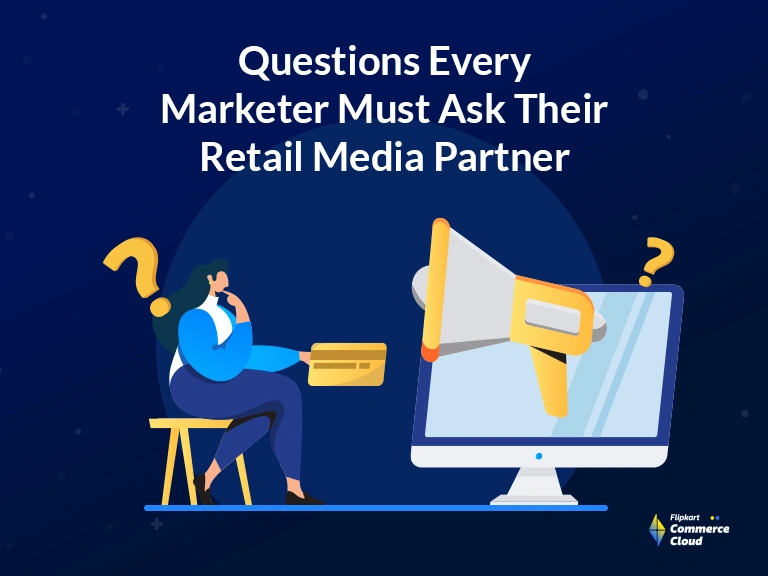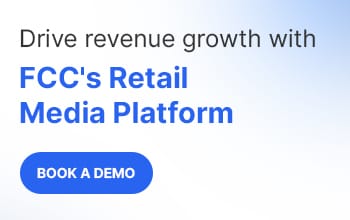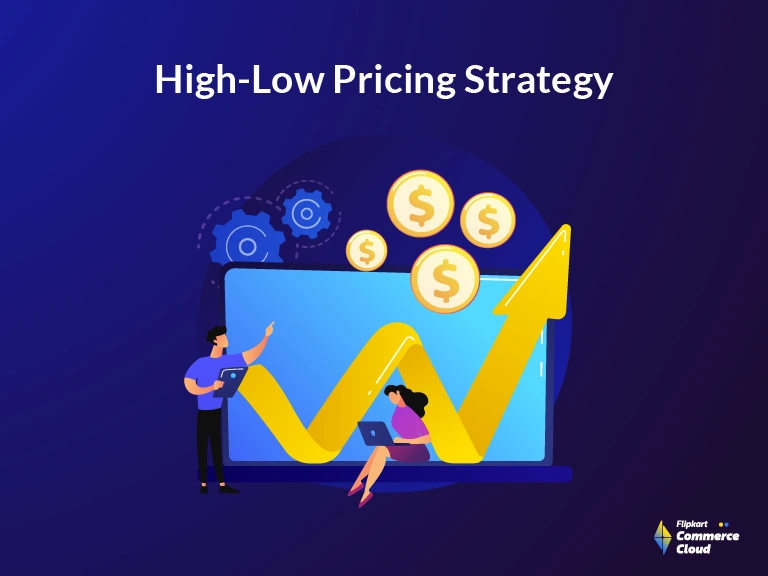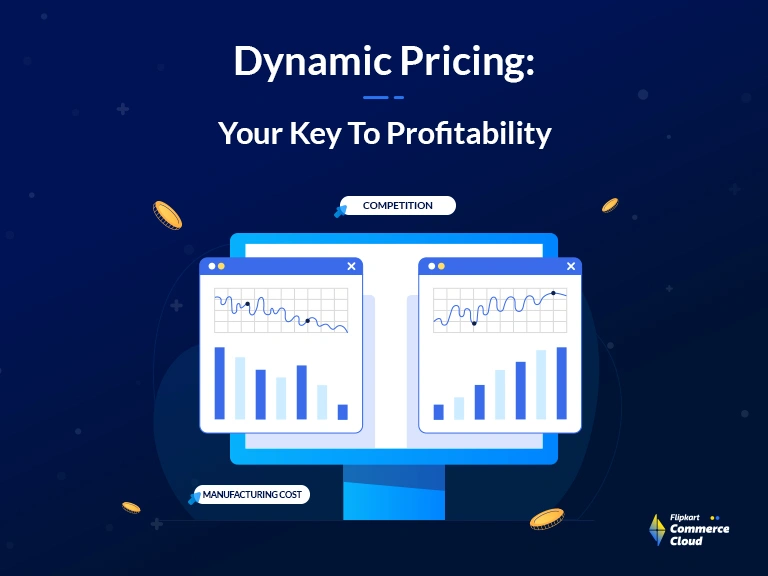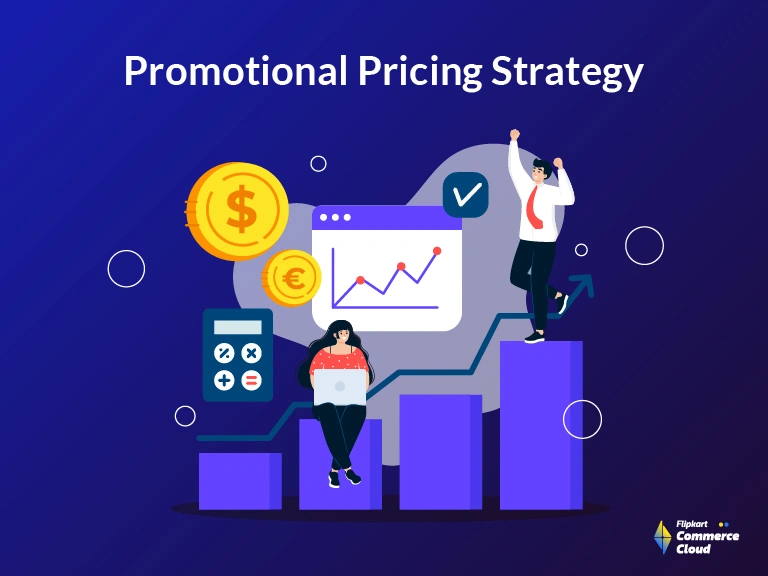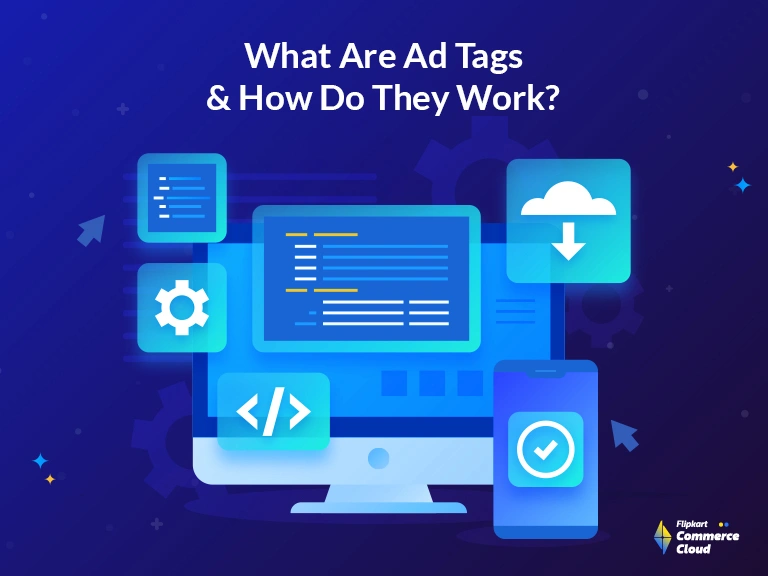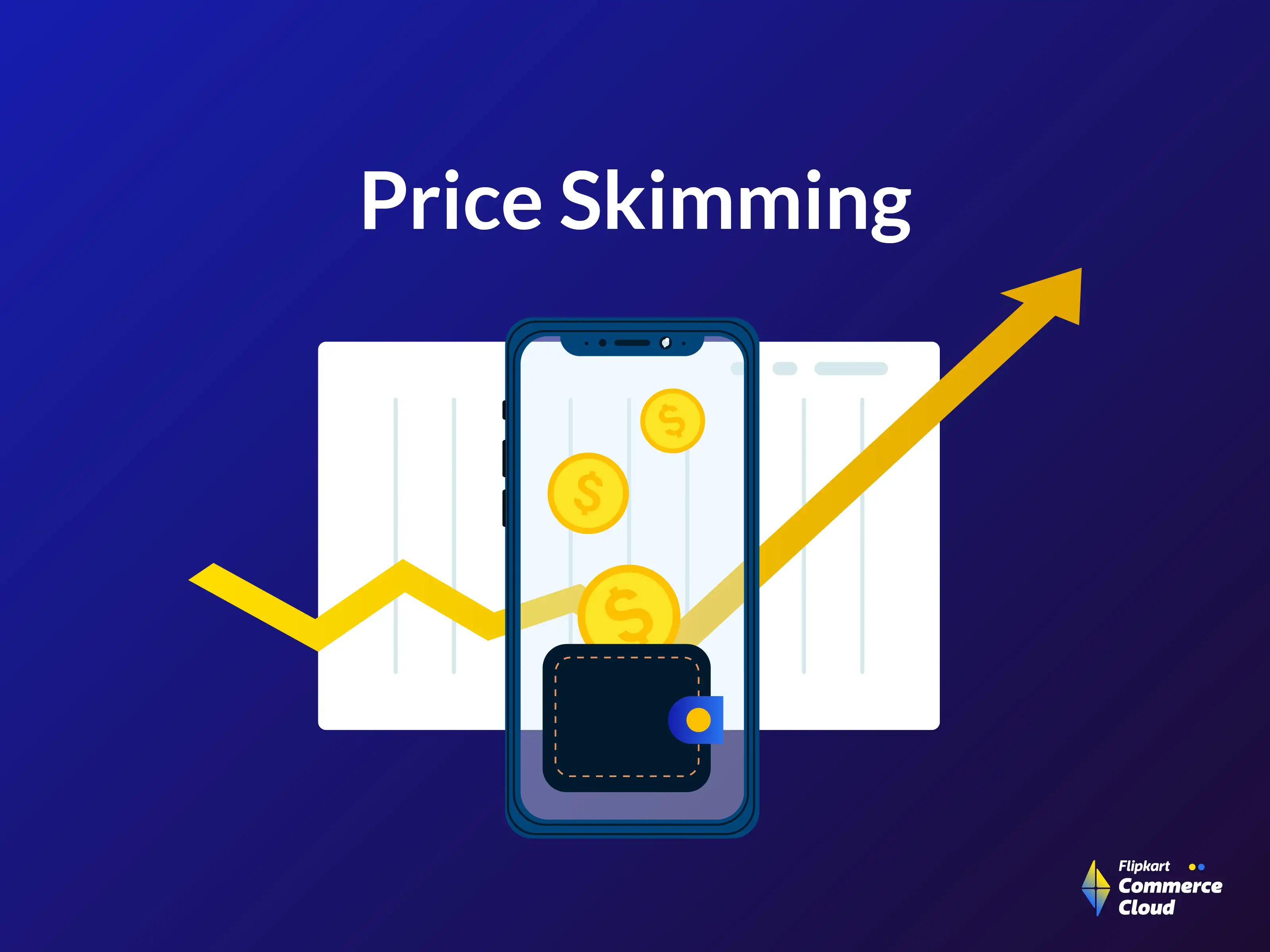Navigating the world of retail media can be like wandering through a maze, don’t you think? With new players constantly appearing and claiming to be top-notch, it’s hard to figure out who to rely on. Even with groups like the Interactive Advertising Bureau (IAB) and the Incorporated Society of British Advertisers (ISBA) trying to bring some structure to the chaos, we’re still miles away from having a standard rulebook for the industry. So, how do you choose the best retail media partner in this situation?
Our blog post will help you figure out the key questions you need to ask your retail partners to improve campaign measurement.
How are you defining the impressions?
When we discuss impressions in digital advertising, we’re talking about how often an ad is displayed on a website or app. It’s like the online version of putting up a billboard, where each passing car represents an impression. However, things get tricky here. According to the Interactive Advertising Bureau (IAB), an impression is counted every time an ad is displayed, even if nobody actually sees it. Think of it like having a billboard up in foggy weather – even if half the cars can’t see it, those would still count as impressions in the digital realm.
But here’s the catch: there’s something called a viewable impression that adds a twist to the story. It’s a more precise way of measuring ad impact because it only counts when someone actually lays eyes on the ad. It’s like ensuring the weather is clear, and drivers can see your billboard. Different retail platforms handle these two types of impressions differently. Some break down viewable impressions within their overall impressions, while others don’t make that distinction.
So, why does this matter to you?
Well, if you understand how your retail media partner counts impressions, you’ll have a better idea of how visible your campaign is. Are you spending on ads that are displayed but not actually seen? Or is your partner making sure that your investment translates into real visibility on your ads? This matters greatly because an ad can only work magic if people see it. To gauge your impressions’ impact, focus on viewable impressions as your main measure. This way, you know your money is going toward ads that show up and leave an impression on your audience.
Ask your retail partner:
When talking to potential retail media partners, don’t be afraid to ask how they count and report impressions. It’s all about making sure you’re getting the visibility you’re paying for.
What types of clicks are measured in the campaign?
Let’s talk about clicks—those digital “handshakes” that tell us someone is interested in your offering.
The Interactive Advertising Bureau (IAB) categorizes them into two types: click-through and in-unit. But let’s keep it simple. Picture yourself browsing an online store and coming across an ad. If you click on the ad and get taken to another page to learn more about the product, that’s a click-through click. It’s like saying, Yes, I want to see where this journey takes me! On the other hand, if you click on an ad but stay on the same page – maybe just adding the item to your basket – that’s what we call an in-unit click. Here it’s saying, let’s add this to the cart, but I’m not ready to look away from this page yet.
In eCommerce, the spotlight is on the add-to-basket click, which allows you to quickly add something to your cart without leaving the current page. The second type of click is when you are redirected to a product detail or another page featuring the advertised products. These click-through clicks are similar to taking a detour to learn more about a product that caught your eye. Not all clicks are equal, and those right clicks on an ad, they’re just like window shopping without any real intention to buy.
So, how can we accurately assess these clicks to gauge the success of our campaign? The focus should be on the meaningful clicks—add-to-basket and click-through moments—these truly indicate engagement and interest. They are the ones that matter for gauging how well your campaign connects with your audience.
Ask your retail partner:
When you’re talking to your retail media partner, make sure to find out how they keep track of and understand these clicks. Do they pay attention to the clicks that really show interest? This information can help you figure out how many clicks there are and how engaged people are with your campaign. Just remember, it’s not just about getting any clicks; it’s about getting the right ones that lead to real interactions.
How are you counting the sales based on clicks or impressions?
Understanding how sales are linked to your campaign can be quite a mystery. It’s about determining whether the sales result from people simply viewing your ad, known as view-based attribution, or from them actively clicking on it, which we refer to as click-based attribution. With view-based attribution, your ad is quietly working in the background, not requiring active participation but still leaving an impression on potential customers as they browse.
This approach is commonly used for display media campaigns to increase brand visibility for a wide audience online. On the other hand, click-based attribution is more direct, crediting sales to your campaign when someone clicks on your ad. This method is straightforward and is used for more targeted efforts such as sponsored product placements. It’s a way of saying – ‘Hey, this person didn’t just see our ad; they were interested enough to interact with it.’
So, what’s the best way to gauge the effectiveness of these strategies? It all comes down to monitoring and analyzing. When it comes to view-based attribution, you’ll want to track how often your ad was seen (impressions) and compare that with sales during the same time frame. Click-based attribution is more direct: simply follow the path from the click to the sale.
Ask your retail partner:
How do they define a sale within the context of your campaign? Understanding this will provide insights into what they believe influences customer behavior and how they’ll evaluate and report on your campaign’s success.
How many clicks are counted per impression?
Picture this: you put up a poster in the busiest part of town (that’s your impression). Now, imagine the same person repeatedly passing by and stopping to acknowledge the poster each time. In the digital realm, no matter how often they stop (or click), it’s usually counted as just one interaction per viewing session. This ensures fairness and prevents an overly enthusiastic customer from skewing your data with excessive clicking. However, not everyone follows these rules. Some may count every single click, believing that enthusiasm should be rewarded with higher counts. While this approach offers a different view of engagement, it can also inflate your metrics and make it seem like your ad is incredibly popular.
Ever wondered how we measure clicks per impression? Typically, retailers adhere to a one-click-per-impression guideline. Knowing the click-to-impression ratio used by your retail media partner helps in understanding the engagement level of your campaign.
Ask your retail partner:
Communication and clarity are key. Ask them directly about how they calculate clicks per impression and what that means for your campaign. This will give you insight into the number of interactions and the level of engagement you are receiving. It’s like knowing if your audience is simply nodding along or genuinely enjoying your message.
What is the attribution window, and are you considering the brand halo effect?
The attribution window determines the timeframe in which a sale can be directly linked to someone engaging with your ad. It’s like giving credit to the ad for influencing a purchase within a specific period. Retailers often switch between a seven-day and 14-day window. So, if someone clicks on your ad and purchases within that time frame, that sale is credited to your campaign.
But here’s the twist: Some retailers might extend this window even further to capture the wider impact of an ad. The downside? If we’re not careful and don’t consider the long-term value of these new customers, extending the attribution window too much could inflate your Return on Ad Spend (RoAS) numbers without truly showing effectiveness.
Now, let’s talk about the brand halo effect. This concept is intriguing because it goes beyond just the direct sales of the advertised product. Instead, it takes into account any increase in sales across all brand products after the ad campaign, even those that weren’t specifically featured in the ads. The advertisement for one product brings attention to the entire brand, creating a halo effect that boosts the appeal and sales of other products under the same umbrella.
Measuring this brand halo effect is quite complex. It involves analyzing sales data across all products and identifying increases that align with your advertising efforts, even for products just benefiting from being associated with the campaign rather than directly being featured in it.
Ask your retail partner:
The best approach combines detailed tracking with clear communication from your retail media partner. They should be able to tell you how many sales were directly attributed to an ad click or view and how they’re accounting for sales that may be indirectly influenced—like brand halo sales. Are they including sales of other products in your brand that weren’t directly advertised? How are they ensuring that the sales attributed to your campaign are genuinely a result of your advertising efforts, especially in longer attribution windows?
It’s about digging deeper than the surface-level metrics. You’ll want to look at both the immediate and broader impacts of your advertising, all while ensuring that the attribution method aligns with your goals and provides a realistic view of your campaign’s ROI. This means asking for specifics on how your partner measures and attributes sales, including any tools or methodologies they use to capture the brand halo effect.
FCC completely takes care of attribution, providing a detailed analysis of ad performance across different e-commerce platforms. This sheds light on the entire lifespan of an ad’s impact, from initial exposure to eventual conversion. Just imagine being able to track a purchase back to the exact moment a customer first saw your ad, bridging the divide between previous interactions and future sales. It’s all about comprehending the journey from awareness and interaction, such as views or adding products to a wishlist, right up to the crucial moment of purchase, ensuring that every step is accurately attributed to your campaign. This captures the immediate effect of your ads and their enduring influence, creating a comprehensive understanding of their efficacy.
Are first-check-out, last-checkout, and delivered attribution applied?
Starting with first-checkout attribution, this model considers the items a customer adds to their cart and checks out for the first time. It’s like capturing the initial impression of what the customer intended to purchase, but it’s only a snapshot without waiting for the complete picture to develop. While it offers early insights into customer intent, it can be misleading. For example, if someone adds an expensive bottle of wine to qualify for free delivery but later removes it, relying solely on this first checkout, it might lead to the mistaken belief that the wine is a top seller when, in reality, it only briefly appeared in the customer’s shopping journey.
In contrast, last-checkout attribution waits for the final checkout before delivery and looks at what remains in the cart. This approach is similar to saying – ‘Let’s see what sticks after all the changes.’ Still, it can be challenging during peak festival times because they only see real-time click data without understanding the end return on investment until much later.
Imagine the delivered basis attribution as the grand finale of a performance. It goes beyond just looking at the last checkout and considers what was delivered to the customer’s doorstep. This approach is like a meticulous accountant who waits until all the goods are delivered, making sure every item is accurately accounted for, even considering adjustments for out-of-stock items or substitutions. While it provides the most accurate reflection of consumer purchase behavior, it requires patience due to a significant delay in tying it back to campaign performance metrics like RoAS (Return on Ad Spend).
So, how do we define and calculate these attributions?
First-checkout attribution is simply the total of all items in the first basket checkout, while last-checkout attribution recalculates this total based on the final basket before delivery. Delivered basis attribution takes it further by adjusting this total based on what was delivered. Each method has its own nuances in capturing consumer behavior and impacting RoAS calculations.
Ask your retail partner:
When you talk to your retail media partner about measuring your campaigns’ success, it’s important to be clear and stay on track. Find out if they can adjust their measurement methods to match your campaign goals and how they handle delays in reporting, especially with last-checkout and delivered basis methods. Ask them how they deal with product returns, substitutions, and, most importantly, how they prevent bot activity from distorting your campaign data. Knowing how they handle these issues will help you better align your marketing strategies with real consumer behavior, making sure that your advertising money is well spent.
How are you taking care of duplicate or multi-touch attribution?
Running multiple campaigns across different platforms can feel like solving a mystery when figuring out which ad actually led to a customer making a purchase. It’s similar to identifying which friend was the key influence in convincing you to visit an incredible new restaurant downtown.
Duplicate attribution occurs when every ad in a campaign is credited for a single sale, much like thanking all five friends for convincing someone to buy when you only told them about the sale. It may seem generous, but it doesn’t pinpoint who was the most persuasive.
On the other hand, multi-touch attribution is more sophisticated. It reflects on your week and recognizes every event that prompted you to try that new restaurant. Perhaps one friend mentioned it first (first click), another shared a great review (influence), and finally, someone else’s Instagram post (last click) persuaded you to go. Multi-touch attribution strives to acknowledge each of these friends based on their impact: whether the initial mention, the most compelling argument, or the final push got you through the door.
Getting this right is important for retailers. It’s not enough to just know that your ads are effective; you need to understand which ones are the most effective and how they complement each other. With duplicate attribution, you’re dividing the credit equally among all contributors. However, with multi-touch attribution, you adjust the credit based on each contributor’s impact on the overall success. There are various methods to determine this balance, such as analyzing which ads the customer interacted with first, last, or most engagingly and then distributing the credit accordingly.
Ask your retail partner:
Ask your partner about how they incorporate first-checkout and last-checkout and deliver basis attributions into campaigns. Ask if they can customize these attribution models to fit your specific products and customer journey. This will help determine if they can adapt their approach to align with your unique selling points and customer behaviors. Lastly, question how these models impact your strategy adjustments and real-time decision-making. This will help you understand the actionable nature of the insights derived from each attribution model and their adaptation to market dynamics.
How do you prevent ad fatigue and ensure ads are shown at the right frequency?
In simple terms, ad fatigue occurs when your audience is tired of watching the same ads to the point where their interest starts to wane. They stop clicking, stop engaging, and, worst of all, begin to disregard your brand altogether. It’s akin to repeating a joke multiple times; it loses its impact after the initial few times.
Calculating is not as easy as ticking a box. You need to monitor several key indicators. Are engagement rates dropping? Are conversion rates beginning to decline? These could be early signals that your audience is weary of seeing the same old ad. You might notice a decrease in engagement rates, such as fewer clicks or interactions with your ad, or an uptick in negative feedback, like people hiding your ad or flagging it as spam. Another sign could be a reduction in conversion rates over time, even if the number of impressions remains high.
Ask your retail partner:
- Engagement Rate: Are fewer people interacting with your ad over time?
- Click-Through Rate (CTR): Is the percentage of viewers clicking on your ad decreasing?
- Conversion Rate: Are they seeing fewer actions taken (e.g., purchases, sign-ups) as your ad continues to run?
- Frequency: How often is the average person seeing the ad? A high frequency often correlates with ad fatigue.
What measures are you taking for bot activity?
Think of bot activity as any interaction with your website or ads that don’t come from a real human interested in your products. When we talk about bot activity on retail websites, we’re mainly looking at automated scripts or programs that crawl through websites to gather information (web scraping), check out prices, or, sometimes, mimic human activity by clicking on ads or filling out forms. This can be a challenge because it skews your understanding of how well your campaigns are doing.
Detecting bot activity is not always simple, as bots can be very skilled at imitating human behavior. However, certain indicators to look out for include a sudden surge in page views within a short period, consistent patterns that seem unnatural for humans, or clicks from locations that do not align with your target audience.
Ask your retail partner:
How can they tell the difference between human and bot traffic? Are they using advanced methods to detect and remove bot activity? Can they offer detailed reports that separate real engagement from bot activity? What are they doing to stop bots from interacting with your campaigns in the first place? Are they constantly improving security measures or using advanced algorithms to identify and block suspicious behavior?
Effectively measuring the success of your bot mitigation efforts involves more than just a decrease in bot activity. They should track key metrics that reflect the impact on real human interactions. For example, are conversion rates increasing? Are bounce rates for ads or website visits decreasing? These indicators can provide insight into whether your audience is genuinely interested in your content and offerings.
FCC Ads Manager is an all-in-one solution for businesses looking to advertise online. It offers a variety of ad types, including display ads, contextual ads, and product listing ads, to help drive engagement and conversions. With FCC Ads Manager, you can capitalize on every customer interaction and build a complete retail media ecosystem for maximum revenue. Plus, it’s easy to get started with display ads for instant results or utilize product contextual ads to target users based on their search keywords.
Our product offers two main types of ads: Product Contextual Ads and Product Listing Ads. These ads are designed to target users based on their search keywords, ensuring higher click-through rates and better performance for brands. With our Advanced Ad Manager capabilities, you can further optimize your ad revenue with the help of our expert consultations.
Create your own ads ecosystem with ease and minimal investment using FCC’s services. Our platform offers a variety of ad formats, including video ads, rich media, and static ads, all in one suite. Empower your users by allowing them to create their own campaigns through our self-serve platform, reducing operational overhead. With our white-labeled dashboards, you can automate reporting processes while providing a seamless user experience for your clients.
